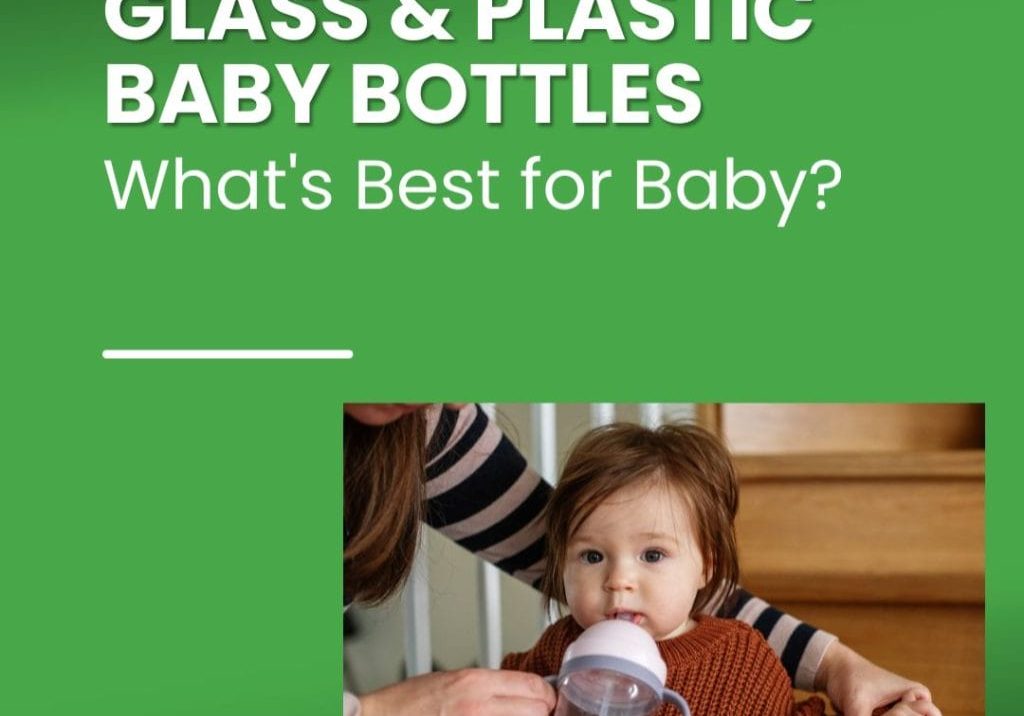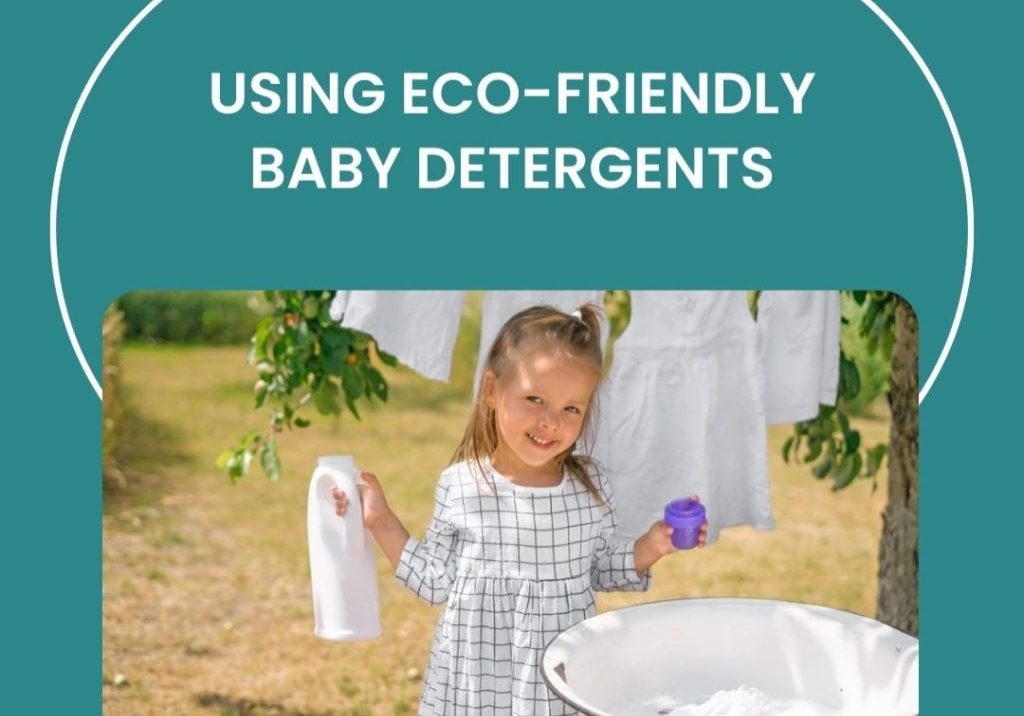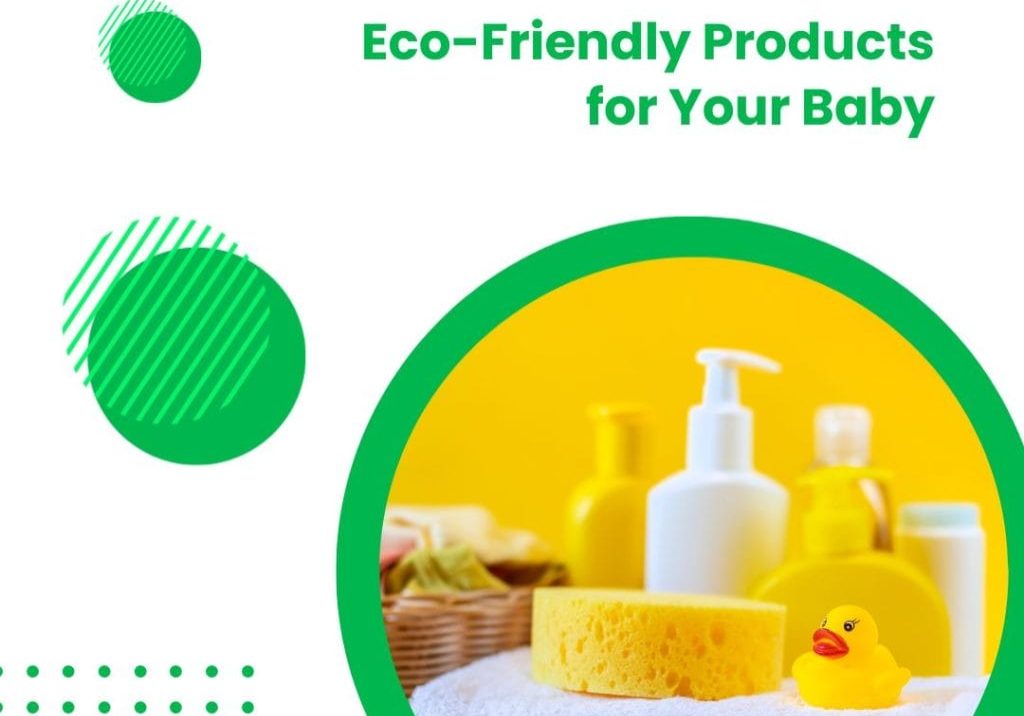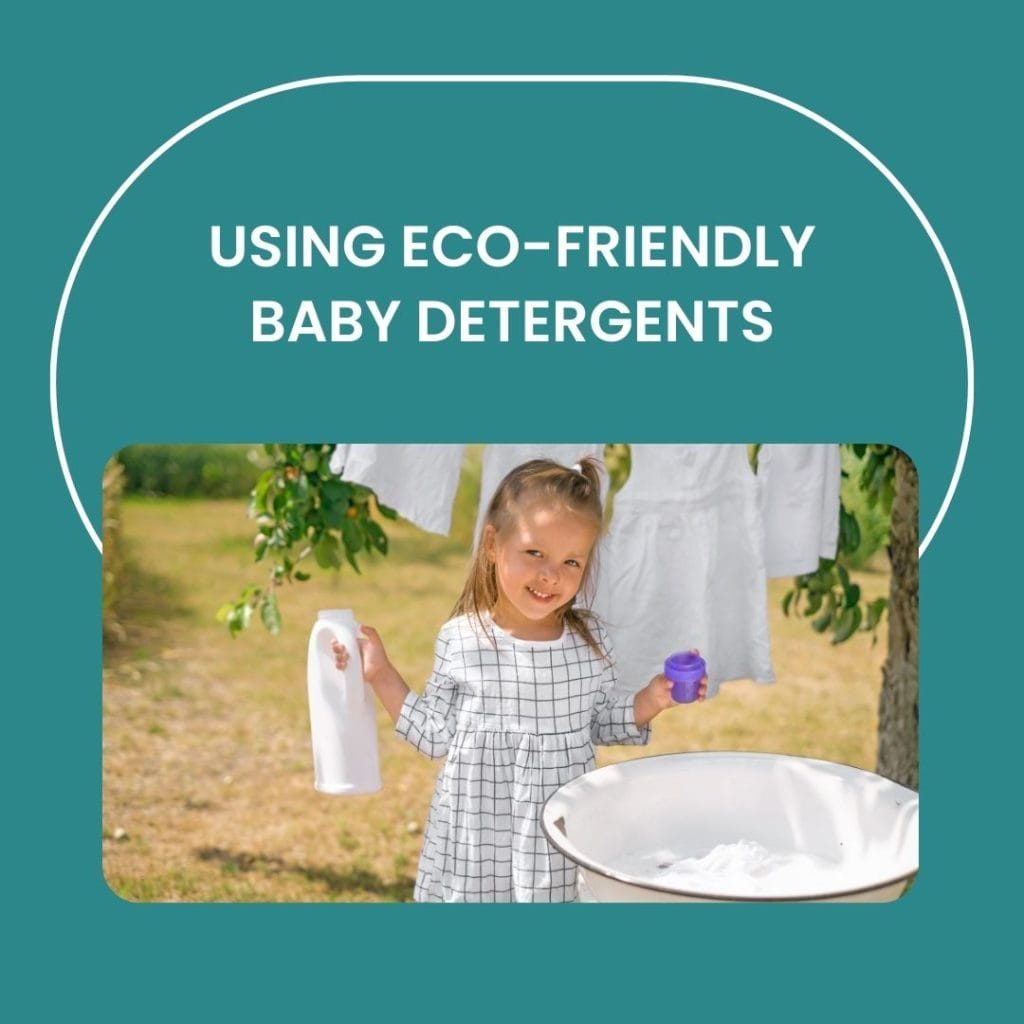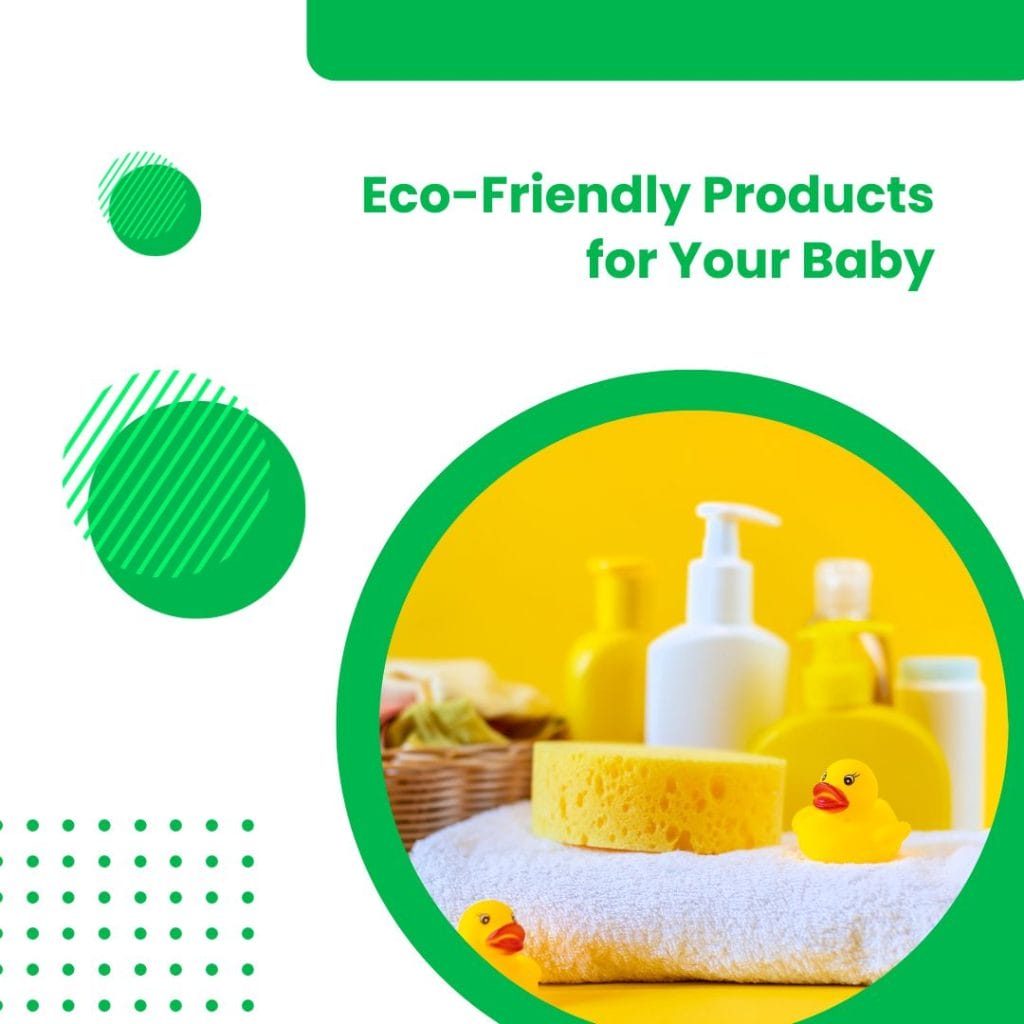In an age where the health of our planet and the legacy we leave for future generations is more important than ever, making conscious choices about the products we use daily has become imperative. This awareness extends into all facets of life, including the nurturing and care of our youngest members. As parents, guardians, or caregivers, embracing eco-friendly baby products is no longer a niche choice but a critical step towards a sustainable future.
The journey of raising a child is filled with countless decisions, from what they eat to what they wear and everything in between. In recent years, a growing emphasis on sustainability and health has led to a surge in eco-friendly baby products. These products are designed to be safe for your baby and the environment, reducing the ecological footprint from the very beginning of a child’s life. By choosing eco-friendly options, parents can ensure a healthier, safer world for their children while instilling values of environmental stewardship from the youngest age.
Join us as we explore the world of eco-friendly baby products, guiding you through informed choices that benefit not only your child but also the world they will inherit. It’s a journey of love, care, and responsibility – a commitment to a healthier, more sustainable future for all.
Embracing a Sustainable Path for Your Little One
In the quest for a greener planet and a healthier lifestyle, parents everywhere are turning their attention to eco-friendly baby products. These products promise a safer environment for children and a more sustainable future. Understanding what makes a baby product eco-friendly, its common features, and the types of products available is crucial for parents looking to make informed decisions.
What Makes a Product Eco-Friendly?
Eco-friendly baby products are designed with the health of the environment and your child in mind. They are characterized by several core attributes:
- Sustainable Materials: They are made from renewable, biodegradable, or recycled materials that reduce the impact on the environment. This might include organic cotton, bamboo fibers, or recycled plastics.
- Non-toxic: Eco-friendly products are free from harmful chemicals and toxins such as BPA, phthalates, lead, and PVC. This ensures that your baby is not exposed to materials that could harm their health.
- Durability and Longevity: These products are often designed to last longer, encouraging a culture of reuse and reducing waste.
- Ethical Production: Many eco-friendly products are produced through fair trade and ethical labor practices, ensuring that their manufacture doesn’t harm people or the planet.
Common Features of Eco-Friendly Baby Products
When browsing eco-friendly baby products, you’ll notice they share several common features, reflecting their commitment to sustainability and safety:
- Biodegradability: Many products are biodegradable, meaning they can be broken down naturally, reducing landfill waste.
- Hypoallergenic: They are often hypoallergenic and gentler on a baby’s sensitive skin, making them a preferred choice for parents.
- Packaging: The packaging is typically minimalistic, recyclable, or compostable, further reducing environmental impact.
- Certifications: Look for certifications like Oeko-Tex, GOTS (Global Organic Textile Standard), or Green Seal, indicating adherence to environmental and safety standards.
Types of Eco-Friendly Baby Products
There’s a wide array of eco-friendly baby products available, covering nearly every need for your little one’s early years. Here are some categories you might consider:
- Apparel and Textiles: From organic cotton onesies to bamboo swaddles, eco-friendly fabrics are soft, sustainable, and safe for your baby’s skin.
- Diapers and Wipes: Biodegradable or cloth diapers offer an eco-friendly alternative to traditional disposable diapers. Paired with natural, chemical-free wipes, they provide a sustainable solution for baby hygiene.
- Feeding Supplies: This includes glass or BPA-free bottles, bamboo bowls, and utensils, all designed to be safe for your baby and the planet.
- Toys: Look for toys made from natural wood, organic fabrics, or recycled materials, free from toxic paints and finishes.
- Furniture: Eco-friendly cribs, changing tables, and dressers made from sustainable materials and non-toxic finishes ensure a safe space for your baby.
Nurturing Your Child with Sustainability in Mind
In today’s environmentally conscious world, selecting eco-friendly products for your baby isn’t just a personal choice; it’s a commitment to health and sustainability. Understanding the significance of these products and familiarizing yourself with the various categories available can help you make informed decisions that benefit your child and the planet.
The Importance of Selecting Sustainable Items
Choosing eco-friendly baby products is crucial for several reasons:
- Health and Safety: Eco-friendly products are typically free from harmful chemicals and toxins, ensuring a safer environment for your baby to grow and thrive.
- Environmental Impact: By selecting sustainable items, you’re contributing to reduced waste, lower carbon emissions, and conservation of natural resources, ensuring a healthier planet for future generations.
- Long-Term Savings: While some eco-friendly products might have a higher upfront cost, their durability and reusable nature often lead to long-term savings.
- Educational Value: Using eco-friendly products from the start helps instill values of environmental stewardship and responsible living in your child from a young age.
Categories of Eco-Friendly Baby Products
As you embark on the journey of selecting eco-friendly products for your baby, you’ll encounter a variety of options:
- Apparel: Look for clothes made from organic cotton, bamboo, or other sustainable materials that are soft and safe for your baby’s skin.
- Diapers: Consider cloth diapers or biodegradable options to reduce waste. Pair these with natural, chemical-free wipes for a complete eco-friendly diapering solution.
- Feeding Supplies: Choose from glass or BPA-free plastic bottles, bamboo plates, and utensils, all designed to be safe and sustainable.
- Toys: Opt for toys made from natural materials like wood or organic fabrics, free from harmful chemicals.
- Furniture: Invest in cribs, changing tables, and dressers made from sustainable materials and non-toxic finishes to ensure a safe nursery environment.
Providing Detailed Guidance on Selection
Choosing the right eco-friendly products for your baby involves more than just recognizing the categories—it’s about understanding what to look for and why. In our detailed child articles, we’ll provide in-depth guidance on how to select the best eco-friendly products in each category. We’ll cover:
- What to Look for: Key features, certifications, and labels that indicate a product is genuinely eco-friendly.
- Comparing Options: How to weigh the pros and cons of different materials and brands.
- Practical Tips: Advice on integrating eco-friendly products into your daily routine and making sustainable choices that fit your lifestyle.
The Benefits of Using Eco-Friendly Baby Detergents
Gentle Choices for Your Baby and the Planet
In the realm of baby care, cleanliness is paramount. However, the choice of detergent can significantly impact both the health of your child and the environment. Eco-friendly baby detergents are gaining popularity as parents become more aware of their benefits. This article explores why these detergents are an essential part of baby care, outlines their advantages, and introduces how our in-depth child article will delve further into this topic.
Why Detergents Are a Crucial Part of Baby Care
Babies, especially newborns, have delicate skin that is more vulnerable to irritation, allergies, and infections. Regular detergents often contain harsh chemicals and fragrances that can disrupt a baby’s sensitive skin and respiratory system. Therefore, choosing the right detergent is not just about cleanliness; it’s about ensuring the health and comfort of your little one. Eco-friendly detergents, formulated with natural ingredients, provide a safe alternative that cleans effectively without exposing your baby to unnecessary chemicals.
Advantages of Eco-Friendly Detergents
- Gentle on Skin: Eco-friendly detergents are typically made with natural, hypoallergenic ingredients that are less likely to cause skin irritation or allergic reactions in babies.
- Safer Ingredients: They are free from harmful chemicals like phosphates, chlorine, and synthetic fragrances, ensuring that your baby’s clothes are clean and safe.
- Environmental Protection: By using detergents that are biodegradable and made from sustainable resources, you’re reducing water pollution and contributing to a healthier environment.
- Energy Efficient: Many eco-friendly detergents are effective in cold water, reducing energy consumption and your carbon footprint.
- Cost-Effective in the Long Run: While they might seem more expensive initially, their concentrated formulas and efficiency can lead to savings over time.
Transitioning to an In-Depth Look
Understanding the benefits of eco-friendly baby detergents is just the beginning. To truly appreciate and effectively transition to these products, it’s essential to delve deeper. In our detailed child article, we will explore:
- Ingredients to Look For and Avoid: A comprehensive guide to understanding the labels and what constitutes a safe detergent.
- Comparison of Top Brands: Insights into how different eco-friendly detergents stack up against each other.
- Usage Tips: Practical advice on how to use eco-friendly detergents effectively, including dosing, pre-treating stains, and understanding wash cycles.
Comparing Glass and Plastic Baby Bottles: What’s Best for Baby?
Navigating the Choices for Your Little One’s Nutrition
For many parents, choosing the right baby bottle is a critical decision. It’s not just about convenience; it’s about your baby’s health, the environment, and practicality. The debate between glass and plastic baby bottles has been ongoing, with each option presenting its own set of benefits and considerations. This article aims to introduce the debate, highlight the key aspects each type of bottle offers, and preview the in-depth discussion provided in the child article.
Introducing the Debate
The choice between glass and plastic baby bottles is more than a matter of personal preference; it’s a decision that impacts every feeding time. Glass bottles are often celebrated for their durability and cleanliness, while plastic bottles are admired for their lightweight and shatter-resistant nature. Each material has its advocates and critics, and understanding the differences is crucial for making an informed decision that suits your lifestyle and values.
Key Points to Be Explored
In the child article, we will dive deeply into several critical aspects of this debate, including:
- Health and Safety: Examine how each material interacts with liquids, potential chemical leaching, and the overall safety implications for your baby.
- Durability and Lifespan: Discuss the longevity of each type of bottle, considering factors like breakability, resistance to heat, and wear over time.
- Environmental Impact: Analyze the ecological footprint of both glass and plastic bottles, considering production, recycling options, and biodegradability.
- Ease of Use and Maintenance: Compare how user-friendly each option is, including weight, compatibility with sterilizers and warmers, and ease of cleaning.
- Cost Considerations: Break down the initial and long-term costs associated with each type of bottle, helping parents make a cost-effective choice.
Health, Sustainability, and Practicality Aspects
When comparing glass and plastic baby bottles, three primary factors come into play:
- Health: We’ll explore concerns about chemical exposure, especially with plastics, and how each material maintains the purity and safety of the baby’s food.
- Sustainability: The environmental impact of both glass and plastic will be examined, considering the entire lifecycle of the bottles from production to disposal or recycling.
- Practicality: We’ll look at which bottles are easier for parents and caregivers to use daily, considering factors like weight, resistance to breaking, and ease of cleaning.
By understanding these aspects, parents can choose a baby bottle that aligns with their health standards, environmental values, and lifestyle needs.
Impact of Eco-Friendly Baby Products on Health and Environment
Fostering a Healthy Start for Babies and the Earth
In recent years, the surge in eco-friendly baby products has marked a significant shift in how parents and caregivers choose items for their young ones. From organic clothing and biodegradable diapers to non-toxic toys and accessories, the rise of green alternatives reflects a growing awareness of health and environmental impacts. This article discusses the benefits of eco-friendly baby products on both the baby’s health and the planet, backed by statistics and studies that underscore their importance.
Benefits to Baby’s Health
Eco-friendly baby products are designed with the utmost care to ensure the safety and well-being of infants. Here are some ways they contribute to a healthier start:
- Reduced Exposure to Toxins: Traditional baby products often contain chemicals like BPA, phthalates, and other harmful substances. Eco-friendly products eliminate these risks by using natural and non-toxic materials, thus reducing potential health issues like allergies, respiratory problems, and hormonal disruptions.
- Gentler on Skin: Babies have delicate skin that’s susceptible to irritation and rashes. Organic fabrics and natural materials are softer and hypoallergenic, making them gentler on a baby’s sensitive skin.
- Promoting Overall Well-being: The peace of mind that comes with using eco-friendly products can contribute to a healthier, more serene environment for both the baby and parents, supporting the baby’s overall development and well-being.
Benefits to the Environment
The choice of eco-friendly baby products also has a profound impact on the planet. By choosing sustainable options, parents contribute to:
- Reduced Environmental Footprint: Eco-friendly products often use renewable resources and sustainable materials, minimizing waste and conserving natural resources.
- Lesser Waste Production: Biodegradable diapers, reusable bottles, and other eco-friendly items significantly reduce the amount of waste generated, as they can be composted or recycled.
- Promotion of Sustainable Practices: Supporting eco-friendly products encourages more companies to adopt sustainable manufacturing processes, leading to broader positive environmental impacts.
Backing Claims with Statistics and Studies
To validate the growing movement towards eco-friendly baby products, numerous studies and statistics highlight their benefits:
- A study by the Environmental Working Group found that children can be exposed to hundreds of chemical ingredients in personal care products alone, underscoring the need for safer, non-toxic options.
- Research indicates that organic cotton farming, used in eco-friendly baby clothes, significantly reduces water and energy consumption and eliminates the use of toxic pesticides, compared to conventional cotton.
- The use of biodegradable diapers can significantly reduce landfill waste. Traditional disposable diapers can take up to 500 years to decompose, while eco-friendly options can break down much more quickly and completely.
Challenges and Considerations in Switching to Eco-Friendly Baby Products
Navigating the Green Path with Ease
Transitioning to eco-friendly baby products is a commendable decision that comes with its own set of challenges and considerations. Parents often encounter various hurdles and questions in this journey. This article aims to address these common concerns, providing practical solutions and alternatives to ensure a smooth transition to a more sustainable lifestyle for your family.
Common Challenges Faced by Parents
- Cost Concerns: Eco-friendly products often come with a higher price tag compared to their conventional counterparts, making them seem less accessible to some families.
- Availability: Finding a wide range of eco-friendly baby products can sometimes be challenging, especially in smaller towns or areas with limited shopping options.
- Performance Doubts: Parents might worry about the efficacy of eco-friendly products, especially in areas like absorbency for diapers or durability for toys and bottles.
- Overwhelming Choices: The growing market of green products can be overwhelming, making it difficult for parents to identify the most genuine and effective options.
- Lifestyle Adjustments: Incorporating eco-friendly products often requires changes in habits and routines, which can be daunting for busy parents.
Solutions and Alternatives
To overcome these challenges, consider the following strategies:
Budgeting and Planning:
- Look for sales, discounts, or bulk buying options to make eco-friendly products more affordable.
- Consider the long-term savings that some eco-friendly products offer, such as reusable items that reduce the need for frequent purchases.
Exploring Various Shopping Avenues:
- Utilize online platforms that specialize in eco-friendly baby products, offering a wider variety at competitive prices.
- Join community groups or forums where parents might sell or trade gently used eco-friendly items.
Testing and Research:
- Start with one or two products to test their performance before fully committing to a switch.
- Read reviews and seek recommendations from other eco-conscious parents or trusted resources.
Educating Yourself:
- Familiarize yourself with labels, certifications, and the brands’ sustainability claims to make informed decisions.
- Don’t hesitate to reach out to companies or manufacturers for more information about their products.
Embracing Incremental Changes:
- Begin by replacing items that are used most frequently with eco-friendly alternatives and gradually expand as you become more comfortable.
- Remember that every small change contributes to the larger goal of sustainability and doesn’t need to happen overnight.
Supporting Sustainable Brands and Practices
Championing a Greener Future through Conscious Choices
In an era of increasing environmental awareness, the power of the consumer has never been more evident. Choosing to support sustainable brands and practices is not just a personal choice but a collective step towards a more sustainable and ethical world. This article discusses why it’s vital to support businesses committed to sustainability and offers practical tips on identifying and selecting these brands.
The Importance of Supporting Sustainable Brands
- Driving Change: By supporting eco-conscious brands, consumers can influence market trends and encourage more companies to adopt sustainable practices.
- Environmental Stewardship: Sustainable brands often use environmentally friendly materials, reduce waste, and minimize their carbon footprint, contributing to the conservation of resources and the health of the planet.
- Ethical Considerations: Many sustainable brands are also committed to fair labor practices and ethical sourcing, ensuring that products are not only good for the earth but also for the people involved in making them.
- Quality and Longevity: Products made by sustainable brands are often designed to be more durable and of higher quality, as they prioritize long-term use over disposability.
Tips on Identifying and Choosing Sustainable Brands
- Look for Certifications and Labels: Seek out products with recognized certifications like GOTS for textiles, Fair Trade for ethical labor practices, or B Corp for comprehensive social and environmental performance.
- Research the Company’s Practices: Visit the brand’s website or contact them directly to learn about their commitment to sustainability, including materials used, production processes, and company ethos.
- Read Reviews and Recommendations: Look for feedback from other consumers and independent reviewers who can vouch for the brand’s sustainability claims and product quality.
- Consider the Product Lifecycle: Understand the full lifecycle of the product, from sourcing to disposal. Opt for brands that offer recycling programs or take responsibility for their products’ end-of-life.
- Support Local and Small Businesses: Often, smaller local businesses have more transparent and sustainable practices. By shopping locally, you can also reduce transportation emissions associated with your purchases.
- Assess Transparency and Accountability: Good sustainable brands are usually transparent about their supply chain, manufacturing processes, and impact assessments. They should be open about their achievements and areas for improvement.
Conclusion
Embracing eco-friendly baby products is a powerful step toward securing a healthier environment and a more sustainable future for our children. By making informed choices about the items we use in our daily baby care routines, we not only safeguard the health of our little ones but also contribute to the well-being of our planet. It’s about taking small, yet impactful steps through the products we choose—be it apparel, toys, or feeding supplies—to foster a safer, cleaner world. As parents, caregivers, and individuals, our collective action in embracing these products can lead to significant environmental and health benefits. Let’s commit to this path of sustainability and ensure a thriving, green world for generations to come.

